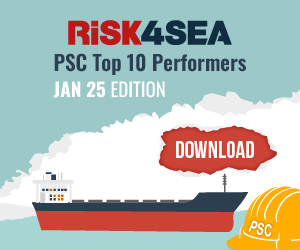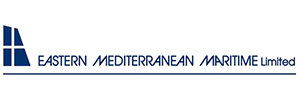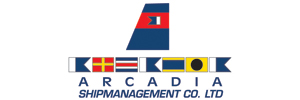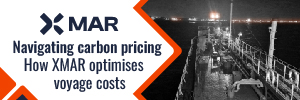The Centre for Research on Energy and Clean Air (CREA) released a report looking at the EU imports of Russian fossil fuels and the shadow fleet sanctions evasion in the third year of the invasion in Ukraine.
According to the report “Three years of invasion” despite a range of sanctions and the threat posed by dependence on Russian energy, EU imports of Russian fossil fuels in particular remain largely unchanged, totalling EUR 21.9 bn, a 6% year-on-year drop in value but merely a 1% year-on-year drop in volumes.
Russia’s total global fossil fuel earnings in the third year of the invasion reached EUR 242 bn and have totalled EUR 847 bn since the start of the invasion of Ukraine in February 2022.
In addition, the three biggest buyers of Russian fossil fuels, China (EUR 78 bn), India (EUR 49 bn), and Turkey (EUR 34 bn) were responsible for 74% of Russia’s total revenues from fossil fuels in the third year of the invasion. The value of India and Turkey’s imports saw a year-on-year increase of 8% and 6% respectively.
CREA’s latest analysis finds that evolving current sanctions to counter Russian circumventions and plugging existing gaps could cut Russian revenues by 20% annually. Key to this will be effectively tackling Russia’s ‘shadow’ fleet, which was responsible for a third of its total revenues in the third year of the invasion.
In the third year of the invasion, 61% (EUR 83 bn) of Russia’s seaborne exports were transported on ‘shadow’ vessels. Furthermore, 71% of Russian crude was transported on ‘shadow’ tankers, thus enabling Russia to evade the oil price cap and make it redundant.
Key findings of the report
- In the third year of the invasion, Russia earned EUR 242 bn from global fossil fuel exports, a 3% year-on-year-drop; EUR 104 bn from crude oil, EUR 75 bn from oil products, EUR 40 bn from gas and EUR 23 bn from coal.
- Despite a host of sanctions, Russian revenues in the third year have dropped by a mere 8% compared to the year prior to the invasion of Ukraine. Since the invasion, Russia has earned an estimated EUR 847 bn from fossil fuels exports globally.
- The EU paid EUR 21.9 bn for Russian fossil fuel imports in the third year of the invasion, a mere 1% year-on-year reduction in volume. The EU’s Russian imports in the third year of the invasion surpassed the EUR 18.7 bn of financial aid sent to Ukraine in 2024.
- The effect of sanctions on Russian Urals grade crude was 70% lower in the third year than the year prior, with sanctions slashing revenues by 6%, totalling EUR 2.6 bn. This is mainly due to Russia’s increased use of ‘shadow’ tankers to transport oil to its new markets, enabling it to bypass the oil price cap.
- Russia relied on 558 Russian ‘shadow’ vessels to transport 61% of its total seaborne oil exports, valued at EUR 83 bn in the third year of the invasion.
- Despite a range of sanctions, EU Member States spent EUR 7 bn on Russian LNG in the third year of the invasion, with volumes rising by 9% year-on-year.
- G7+ countries imported EUR 18 bn worth of oil products from six refineries in India and Turkey of which an estimated EUR 9 bn was refined from Russian crude. Their imports of oil products made from Russian crude generated an estimated EUR 4 bn in tax revenues for Russia.
- Stronger sanctions countering Russian circumventions and targeted towards growing revenue streams can slash Russian fossil fuel export revenues by EUR 51 bn annually, effectively cutting earnings by 20%.
The West’s strategic priority should be to impose sanctions on as many Russian shadow oil vessels as possible.
…said Petras Katinas, Energy Analyst, CREA
Ship-to-ship transfers in EU waters pose increased risk of spills
Ship-to-ship (STS) transfers, commonly and legally used in the shipping industry to expedite cargo delivery, have become a key strategy for countries like Russia, Venezuela, and Iran to bypass Western sanctions and sustain oil exports. Conducting transshipments in international waters allows tanker operators to conceal the oil’s origin, thereby complicating enforcement and inspections.
Furthermore, this opacity raises significant environmental concerns too. There is reasonable doubt on whether ‘shadow’ tankers conducting STS transfers would be able to cover potential spill costs, which could reach up to a billion euros. Such a spill could impact coastal states’ fisheries, tourism, and other critical sectors.
CREA analysis suggests that since the start of the full-scale invasion, 17 mn tonnes of Russian oil, valued at EUR 11 bn, has been transshipped via STS operations in EU territorial waters and EEZ. An estimated 35% of these STS transfers were conducted by ‘shadow’ tankers.
However, in the third year of the invasion alone, 5.2 mn tonnes of oil was transshipped via STS operations in EU waters, with ‘shadow’ tankers accounting for 43% (EUR 1.3 bn) of them Several zones in EU waters, notably the shallow waters off Greece, Romania, Italy and Malta have become key hubs for these illicit operations.
The highest volume of STS activities was recorded in Greece (54%), Romania (31%), Italy (11%), and Malta (4%). CREA’s analysis highlights how STS transfers involving shadow tankers are critical for Russian oil to reach non-sanctioning countries and circumvent Western restrictions.
 In the third year of the invasion, 23% of the oil transshipped in EU waters was destined for China, 11% for India, 10% for South Korea, and 2% for Turkey, with the remainder distributed among other markets. This pattern clearly indicates Russia’s utilisation of EU waters to optimise its logistical routes, making oil shipments faster, more cost-effective, and strategically beneficial.
In the third year of the invasion, 23% of the oil transshipped in EU waters was destined for China, 11% for India, 10% for South Korea, and 2% for Turkey, with the remainder distributed among other markets. This pattern clearly indicates Russia’s utilisation of EU waters to optimise its logistical routes, making oil shipments faster, more cost-effective, and strategically beneficial.
By leveraging these transit points, vessels are able to bypass sanctions while also satisfying a steady flow of oil to buyers in non-sanctioning countries and maintaining revenues.
Additionally, some of Russia’s ‘shadow’ tankers have been dedicated to conducting STS transfers. CREA categorises these tankers as ‘hub tankers’. Over half of their exports are conducted via STS transfers rather than direct shipments. Some of them have in fact been used exclusively for STS operations since the start of the full-scale invasion.
These vessels serve two strategic purposes: they shorten logistical routes, making Russian oil shipments more efficient, and they obscure the true origin of the cargo, complicating sanction enforcement. Since February 2022, CREA has identified 87 ‘hub tankers’, with 68 still active in the third year of the invasion.
Policy recommendations:
- Tackle ‘shadow’ tankers to regain leverage over oil price cap
- Address existing loopholes and end derogations on Russian oil
- Decouple from Russian LNG and cut revenues in transition period
- Address Russian countermeasures by enacting sanctions quickly.


































































